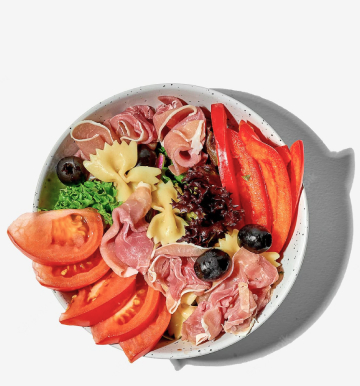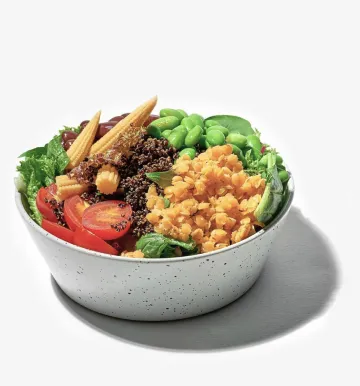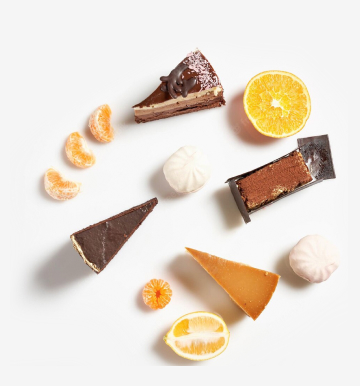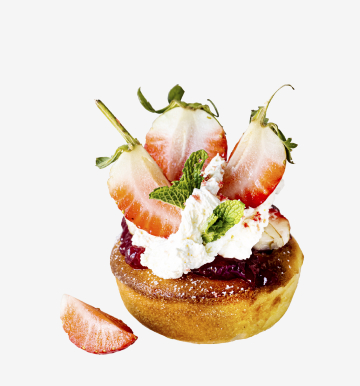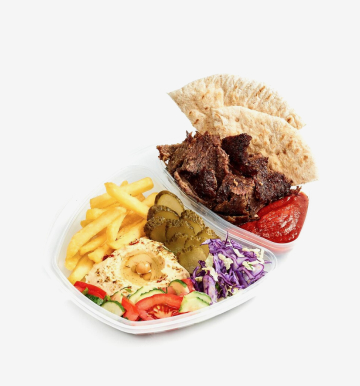Home Update 02
October 4, 2023 2025-06-05 13:04Home Update 02
Become a Home Chef
Learn to cook from scratch and master restaurant-quality meals in your own kitchen. Perfect for beginners and food lovers.

Our Top Courses
We've selected the best programs to get you started. Each course offers step-by-step lessons, hands-on recipes, and guaranteed results — even for beginners.
Mini Crab Cakes with Lemon Aioli
5 Lessons
58 minutes
Intermediate
What you'll learn
How to select and handle fresh lump crab meat for maximum flavor and minimal shell fragments.
The proper ratio of binders (egg, mayonnaise, breadcrumbs) to create tender, non-gummy crab cakes.
Techniques for shaping consistently sized mini patties that hold together during cooking.
Pan-frying tips to achieve a uniformly golden, crisp exterior without overcooking the interior.
How to prepare a smooth, emulsified lemon aioli with the right balance of acidity and creaminess.
Plating and serving suggestions to present mini crab cakes attractively for guests.
Lamb Rogan Jos
3 Lessons
2.2 hours
Intermediate
What you'll learn
Outcome Description
Spice Selection & Preparation Identify and roast whole spices (cinnamon, cardamom, cloves) to form the foundation of the masala.
Yogurt Marinade Techniques Use yogurt and acid (lime or lemon) to tenderize lamb while preserving a creamy texture.
Building the Masala Layer ground spices (Kashmiri chili powder, coriander, cumin) for a balanced, vibrant curry base.
Browning & Layering Flavors Sear lamb to lock in juices, then deglaze with aromatics (onion, ginger, garlic) for depth.
Slow Simmering & Consistency Regulate heat and timing to allow lamb to become fork-tender without curdling the yogurt.
Finishing Touches Garnish with fresh cilantro, julienned ginger, and a drizzle of ghee for aroma and shine.
Mini & Individual Cake Creations
3 Lessons
3 hours
Intermediate
What you'll learn
How to scale down classic cake recipes (sponge, chiffon, pound) for smaller molds and ring cutters
Techniques for creating uniformly shaped mini cakes: using acetate sides, ring molds, and layered inserts
Methods for preparing delicate fillings—fruit compotes, chocolate ganache, and flavored mousses—suited to individual portions
Decorating approaches tailored to small canvases: tempered chocolate accents, buttercream piping, and fresh garnishes
Temperature control and timing secrets that prevent overbaking when working with small molds
Ideas for plating and packaging individual cakes to enhance presentation for events or retail
Fattoush
5 Lessons
1.3 hour
Intermediate
What you'll learn
How to select and prepare a variety of crisp lettuces and vegetables.
Techniques for toasting or frying pita to achieve perfect crunch.
Crafting a signature sumac–lemon vinaigrette for authentic flavor.
Balancing textures: integrating greens, veggies & pita chips.
Creative add-ins: from pomegranate to za’atar for seasonal twists.
Presentation tips to serve fattoush attractively as part of a mezze spread.
Whiskey Sour
4 Lessons
1.2 hour
Intermediate
What you'll learn
History & Origins: Discover the origins of the Whiskey Sour, including its 19th-century naval roots and how it evolved into a mainstream favorite.
Ingredient Selection: Learn how to choose the right whiskey (bourbon, rye, or blended), select fresh lemons, and prepare simple syrup.
Techniques & Ratios: Master the proper juice-to-whiskey ratio (typically 2:1), the role of egg white (optional), and the importance of “dry shaking” versus “wet shaking.”
Shaking & Pouring: Develop your shaking technique to achieve a balanced, chilled cocktail with the signature frothy top.
Garnishing & Presentation: Practice professional garnishing methods—lemon wheel, maraschino cherry, and bitters drops—to elevate appearance and aroma.
Variation & Customization: Explore variations such as using different citrus (e.g., lime), flavored syrups, or spiced bitters to personalize the drink.
Tasting & Evaluation: Hone your palate to identify balance, acidity, sweetness, and mouthfeel, ensuring each Whiskey Sour is perfectly harmonious.
Mojito
3 Lessons
2.3 hours
Intermediate
What you'll learn
How to properly muddle mint and sugar to release essential oils without bruising the leaves.
The ideal ratio of white rum, fresh lime juice, and simple syrup for a perfectly balanced drink.
Techniques for layering ingredients and adding soda water to preserve carbonation.
Tips for selecting the freshest mint varieties and hand-rolling or tearing leaves.
Methods to crush ice at home for that classic “frosty” Mojito texture.
Variations on the traditional recipe, including flavored syrups or fruit additions.
Decadent Chocolate-Drizzled Cake Pops
4 Lessons
5.2 hours
Intermediate
What you'll learn
How to bake a moist cake base optimized for cake pops
Techniques for crumbling and mixing cake with fillings for consistent texture
Molding and chilling methods to form even, crack-free spheres
Proper chocolate tempering for glossy, snap-worthy coatings
Drizzling and decoration tips: two-tone drizzles, sprinkles, and edible embellishments
Storage and transport strategies to keep cake pops fresh and intact
Berry Gradient Ice Cream
3 Lessons
2.4 hours
Intermediate
What you'll learn
How to prepare and strain fresh berry purees for a smooth texture
Techniques for building distinct, colorful layers without mixing
Tips on freezing timing between layers for clean separation
How to balance sweet, tart, and creamy flavors across layers
Proper slicing and serving methods to highlight the gradient
Creative ways to present and garnish layered frozen desserts
Troubleshooting & Refinement Workshop
4 Lessons
2.9 hours
Intermediate
What you'll learn
Identifying Baking Flaws
Recognize symptoms: wet centers, domed tops, tunneling.
Distinguish oven, ingredient, and mixing–related causes.
Adjusting Recipes & Techniques
Modify ratios for moisture balance and crumb structure.
Tweak mixing times to avoid over- or undermixing.
Oven Calibration & Bake Environment
Test for hot spots with simple cake tester method.
Optimize rack placement and temperature adjustments.
Emergency Fixes During Baking
Rescue sinking cakes mid-bake with tented foil or reduced heat.
Correct cracked tops by adjusting cooling and humidity.
Refinement Practices
Use test batches to fine-tune recipes.
Record observations and standardize best practices.
Syrniki with Sour Cream and Berry Jam
3 Lessons
1.8 hour
Intermediate
What you'll learn
Choosing & Preparing Cheese
How to select the right fresh farmer’s cheese (tvorog or quark) for optimal moisture and texture.
Techniques for draining excess liquid to avoid overly wet dough.
Dough Formation & Consistency
Balancing ingredients—cheese, eggs, flour, and a hint of sugar—to achieve a tender but firm pancake batter.
Adjusting flour amounts based on cheese moisture to prevent stickiness while preserving fluffiness.
Shaping & Frying Techniques
Forming uniform rounds without overworking the dough, ensuring even cooking.
Controlling pan temperature and oil quantity for a crisp exterior and soft interior.
Accompaniments & Serving
Preparing sour cream to the right consistency—stirring in lemon zest or sugar if desired.
Selecting or making berry jam (strawberry, raspberry, or mixed) to enhance sweetness and color contrast.
Plating strategies that showcase the contrast between golden syrniki and vibrant toppings.
Flavor Variations & Customizations
Ideas for adding vanilla, citrus zest, or cinnamon directly to the batter for subtle flavor boosts.
Alternative toppings such as honey, fresh fruit slices, or nut butters.
Choose Your Category
Our courses are grouped by category to help you find what suits your taste. From quick dinners to gourmet desserts — start with what inspires you.



About Our Culinary Journey
We are passionate about bringing the joy of cooking to everyone. Our mission is to empower food lovers with the skills and confidence to create delicious meals at home. With expert chefs, innovative teaching methods, and a love for culinary arts, we’re here to inspire your kitchen adventures.
Our Commitment
Everyone can cook well. Our courses offer clear guidance to ensure success for all skill levels.
Community Focus
Join our foodie community. Share creations and grow in a supportive environment.
Why Choose Our Culinary Courses?
Our courses are designed to make cooking fun, accessible, and inspiring. Whether you're a beginner or a seasoned cook, our unique features will help you elevate your skills and unleash your culinary creativity.

Expert Instructors
Learn from world-class chefs with years of experience. Our instructors guide you step-by-step, sharing professional tips.

Flexible Learning
Study at your own pace, anytime, anywhere. Our online platform offers 24/7 access to lessons, so you can fit cooking into your busy schedule.

Hands-On Recipes
Practice with real recipes designed for all skill levels. From classic dishes to modern creations, you’ll master meals that impress every time.
What Our
Students Say
Hear from our happy students who have transformed their cooking skills with our courses. From beginners to seasoned cooks, our community loves sharing their success stories!
"This course completely changed how I cook! The instructors are so knowledgeable, and the lessons are easy to follow. I’m now confident making dishes I never thought I could."
Emma Johnson
"I love the flexibility of these courses. I can learn at my own pace and still feel supported. The recipes are amazing, and I’ve impressed my family with new dishes!"
Michael Chen
"The vegan cooking course was a game-changer for me. I learned so many creative ways to make plant-based meals that taste incredible. Highly recommend!"
Sophie Martinez
"The hands-on approach made learning so fun! I went from burning toast to baking artisan bread in weeks. Thank you for such an inspiring experience!"
James Carter
Discover Our Newest Culinary Courses
Get inspired by our latest additions! These exciting courses bring fresh ideas and techniques to your kitchen, perfect for food lovers eager to try something new. Browse our carousel to find your next culinary adventure.
Coq au Vin
3 Lessons
2.3 hours
Intermediate
What you'll learn
Ingredient Selection & Preparation:
How to choose the right cut of chicken (whole, thighs, or a combination) and select complementary wine (e.g., Burgundy Pinot Noir or alternative regional varieties).
Proper techniques for trimming, seasoning, and preparing lardons, mushrooms, and root vegetables.
Braising Fundamentals:
The importance of searing chicken pieces for color and flavor development.
How to deglaze a Dutch oven or heavy-bottomed casserole with red wine, preserving all the fond (browned bits) on the pan bottom.
Flavor-Building Strategies:
Layering aromatics—onion, garlic, carrot, thyme, and bay leaf—to create depth.
Controlling heat and timing for a slow, gentle simmer that yields tender meat and a concentrated sauce.
Sauce Reduction & Finishing Touches:
Techniques for skimming excess fat and reducing the braising liquid to a velvety consistency.
Tips for adding mushrooms and optional garnishes (parsley, fresh herbs) at the final stage for maximum aroma and texture.
Plating & Serving Suggestions:
How to present Coq au Vin with traditional accompaniments (e.g., buttered noodles, mashed potatoes, crusty bread).
Strategies for reheating or holding the dish without sacrificing quality, making it ideal for dinner parties.
Vegetable Tart with Roasted Pepper and Goat Cheese
2 Lessons
2.2 hours
Intermediate
What you'll learn
How to roast bell peppers to achieve tender flesh and smoky flavor (peeling and deseeding techniques)
Techniques for caramelizing onions to bring out natural sweetness without burning
Preparing a Dijon crème fraîche base for balanced creaminess and tang
Layering vegetables and cheese to ensure even baking and flavor distribution
Baking tips to achieve a uniformly golden, flaky tart shell and prevent soggy bottom
Tabouleh
6 Lessons
2.3 hours
Intermediate
What you'll learn
How to select and properly prepare the key ingredients for authentic tabouleh.
Techniques for soaking and draining bulgur to achieve perfect texture.
Knife skills for finely chopping parsley, mint, tomatoes, and onions.
How to balance acidic, salty, and herbal flavors in the dressing.
Variations to adapt tabouleh for gluten-free and grain-free diets.
Presentation tips to serve tabouleh attractively as part of a mezze spread.
Quinoa & Kale Salad
4 Lessons
2.9 hours
Intermediate
What you'll learn
How to cook quinoa perfectly every time
Proper technique for “massaging” kale to remove bitterness
Knife skills for uniformly chopping vegetables
How to whisk together a balanced lemon–tahini dressing
Tips for seasoning and customizing the salad to taste
Strategies for storing and reheating without sogginess
Classic Cheeseburger
4 Lessons
1.3 hour
Intermediate
What you'll learn
How to choose the right ground beef blend (fat-to-lean ratio) for juicy, tender patties
Seasoning techniques that enhance natural beef flavor without overpowering
Patty-shaping tips to avoid overworking meat and ensure even cooking
Proper grilling or pan-searing methods for desired doneness (from medium-rare to well-done)
Cheese selection and melting techniques for that signature gooey layer
Assembly order: layering bun, patty, cheese, toppings, and condiments for optimal taste and texture
Creative twists—beyond the classic: variations in cheeses, buns, and sauce recipes
Side suggestions and plating ideas to complement your cheeseburger
Pulled Pork Sandwich
4 Lessons
3.3 hours
Intermediate
What you'll learn
Choosing the Right Cut: How to select a well-marbled pork shoulder (Boston butt) and understand why fat content matters for pulled pork.
Seasoning & Rubs: Crafting a balanced dry rub with spices and aromatics to build depth of flavor.
Cooking Methods: Techniques for both traditional smoker smoking (wood vs. charcoal), oven roasting, and slow-cooker approaches—pros and cons of each.
Temperature Control: Monitoring internal meat temperature, knowing when to wrap (the “Texas crutch”), and recognizing the “stall” point.
Shredding & Resting: Properly resting the cooked pork, shredding techniques (fork vs. claw), and keeping the meat moist.
BBQ Sauce Basics: Making a homemade barbecue sauce (vinegar-based, tomato-based, or mustard-based variations) and adjusting sweetness, acidity, and heat.
Sandwich Assembly: Choosing the ideal bun (brioche, kaiser roll, or potato roll), layering techniques to prevent sogginess, and adding complementary toppings (coleslaw, pickles, onions).
Plate Presentation & Storage: Tips for presentation (plating, garnishes) and storing any leftovers without losing texture or flavor.
Layer Cake Construction & Filling Strategies
3 Lessons
58 minutes
Intermediate
What you'll learn
Baking for Uniform Layers: How to prep pans (lining, spray), adjust batter distribution, and use baking strips or temperature hacks for flat, even cake tops.
Leveling & Stacking: Knife vs. cake leveler methods; applying a thin “crumb coat” of frosting; inserting dowels or straws for multi-tier support; stacking layers without slippage.
Filling Varieties & Textures: Selecting between custards, curds, fruit compotes, ganaches, buttercreams, and mousse fillings—considering sweetness, moisture control, and pairings (e.g., raspberry curd with chocolate cake).
Preventing Leaks & Weeping: Techniques for sealing cake layers (buttercream dam, chocolate collar), ensuring fillings stay contained; chilling strategies to set fillings before final coating.
Flavor Harmony & Balance: Matching cake flavor (vanilla, chocolate, spice) with filling profiles (tart, sweet, creamy) to avoid one element overpowering another; adjusting sweetness levels.
Finishing & Presentation Prep: Applying a smooth final coat of frosting or ganache; creating optional decorative borders or piped accents; slicing tips for clean, even servings.
Waldorf Salad
5 Lessons
3.3 hours
Intermediate
What you'll learn
Selecting the best apple varieties for texture and flavor
Toasting walnuts to maximize aroma and crunch
Balancing creaminess and acidity in a mayonnaise-yogurt dressing
Incorporating optional mix-ins like grapes or dried cranberries
Plating techniques for an attractive presentation
Apple Strudel
4 Lessons
4.3 hours
Intermediate
What you'll learn
How to prepare and knead traditional strudel dough, achieving elasticity without gluten overdevelopment.
Techniques for resting and stretching dough until it is paper-thin.
How to make a perfectly balanced apple filling: selecting the right apple varieties, mixing sugar, spices, raisins, and breadcrumbs.
Methods for brushing with butter and rolling without tearing dough.
Baking tips to ensure a golden, crisp crust and tender, aromatic interior.
Variations: nut-studded apple strudel, cherry-apple combination, nut-free options for allergies.
Simple plating and serving suggestions—warm from the oven with vanilla sauce, whipped cream, or a dusting of powdered sugar.
Mini Crab Cakes with Lemon Aioli
5 Lessons
58 minutes
Intermediate
What you'll learn
How to select and handle fresh lump crab meat for maximum flavor and minimal shell fragments.
The proper ratio of binders (egg, mayonnaise, breadcrumbs) to create tender, non-gummy crab cakes.
Techniques for shaping consistently sized mini patties that hold together during cooking.
Pan-frying tips to achieve a uniformly golden, crisp exterior without overcooking the interior.
How to prepare a smooth, emulsified lemon aioli with the right balance of acidity and creaminess.
Plating and serving suggestions to present mini crab cakes attractively for guests.











